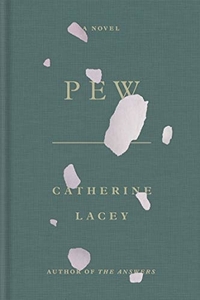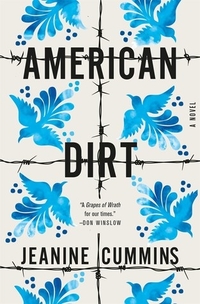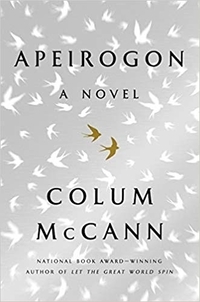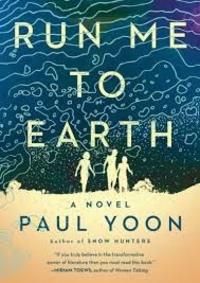Pew by Catherine Lacey
 Monday, July 20, 2020 at 7:19AM
Monday, July 20, 2020 at 7:19AM 
Published by Farrar, Straus and Giroux on July 21, 2020
The narrator of Pew is a boy or a girl of uncertain race and nationality, somewhere on the border of being a child or an adult, male or female, brown or white. The narrator has learned that church pews provide a place to sleep that is sheltered from the elements and peaceful when no service is being held. A pastor decides to call the narrator Pew after the congregation finds the stranger sleeping on a pew during a service. The couple who usually occupy that pew decide it is their Christian duty to bring the stranger home. They soon become uncomfortable and even a bit fearful because Pew will not answer their questions about just who or what Pew is.
Pew understands English but rarely speaks. Pew privately engages with a refugee child named Nelson who meets Pew at another home where Pew is taken for meetings with a therapist. Nelson tells Pew that his “whole family was killed in the name of God and now these people want me to sing a hymn like it was some kind of misunderstanding. Must have been some other guy.” Nelson notes that Pew’s skin sometimes seems lighter and sometimes darker. One of the community leaders notes that he’s never seen a person who looks quite like Pew, presumably because it is so hard to pin down what Pew looks like. Gazing down at “this body” in private, Pew wonders: “Did everyone feel this vacillating, animal loneliness after removing clothes? How could I still be this thing, answering to its endless needs and betrayals?”
The decision to make Pew an indefinite person, someone who defies labels, is a stroke of genius that allows Catherine Lacey to explore the nature of identity and how important identity is to people who don’t know how to react to someone until that person has been defined. Few of the characters can accept that Pew is just a person. They want Pew to be a male or female person or a gay or straight person or a sexually traumatized person or a black or white or foreign or American person. The need to label Pew before deciding how (or whether) to interact with Pew is a theme that permeates the story. The ability to “identify each other,” in the words of a community leader, is what makes us “civilized.” Another community member worries about allowing Pew to interact with the community’s teens (despite Pew’s lack of inclination to do so) without knowing if Pew is “this way or that.”
The Reverend is quite insistent on knowing whether Pew is biologically a boy or girl (you are what God made you, the Reverend insists, you don’t get to decide) but he doesn’t want to find out the hard way. He insists that all people are entitled to “the same kind of respect,” regardless of gender beliefs or national origin, but Pew wonders how many kinds of respect exist. When Pew remains silent rather than answering questions, most of the community views him with even greater suspicion on the theory that someone who doesn’t speak must have something to hide. Pew, in fact, has nothing to hide but nothing to share. Pew has no memory of parents or home or belonging. Pew’s memories are primal. Pew remembers hunger. Pew remembers the terror of being a child “so small that anyone could just pick you up and take you anywhere at any time,” a terror that makes Pew feel “it’s a wonder there are people at all.”
While the community claims a religious motivation to help Pew (“the whole congregation is concerned, but we know God sent you to us for a reason”), it is clear they want to know how to classify Pew so they can send this stranger to a place where s/he might be “more comfortable” — i.e., somewhere that isn’t here, a place where they won’t be reminded that Pew exists. They claim to want what is best for Pew while reserving the right to decide for themselves what is best for Pew, a decision that will clearly be driven by whatever they feel is best for their own lives.
A religious festival is approaching that fills everyone with dread. The festival was originally seen as a way to reconcile the white community with the segregated black community, although the black community no longer participates. The concept of wearing masks to confess sins at a festival is sufficiently intriguing to warrant a novel of its own, but it is just one of several background elements that create a vague sense of unease that permeates the novel. A nurse at a clinic where Pew refuses to undress is disturbed by some people who recently appeared. Some sort of unrest in a neighboring county is dominating the news. Characters speak of living in a time of evilness before they turn off the news and change the topic, avoiding any substantive discussion of the evil that surrounds and threatens to invade their community. All of this unrest is deliberately undefined, a sort of background noise that heightens the reader’s sense of anxiety as the story moves forward.
The novel contains stories within stories. A (presumably) gay character talks to Pew about how the community isn’t so bad because “no one acts ugly to me. Not to my face.” The character wants Pew to know that being different is tolerated, if not accepted, by the community. Another character talks to Pew about the quiet grief he endures regarding his daughter’s decision to renounce science and equality to marry into the church: “what about when you lose someone who is still alive? When you lose track of the person you know within a person they’ve become — what kind of grief is that?” A woman named Tammy remembers a Latvian woman who was kind to her when she ran away from home at 17, an immigrant who had to make a new life among strangers, a woman with whom Tammy instantly bonded because they both felt misplaced, a sensation that has gripped Tammy since childhood, when she felt that her existence was an accident. Tammy and her husband later tell a tragic story about ill-fated peacocks, ending with the moral: “There’s all sorts of things a person can’t know until it’s too late.”
There is so much stuffed into this relatively short novel that it might take two or three readings to unpack it all. I can imagine professors using it as a teaching tool, not just in literature classes but in philosophy and a variety of social sciences. From a casual reader’s standpoint, the story is beautifully told, raising universal questions that are particularly timely given the worldwide rise of nationalism and white supremacy and intolerance of nontraditional gender identities. Pew is provocative in its multi-faceted portrayal of people who feel like outcasts because they do not easily fit within the narrow boundaries that a community is prepared to accept, no matter how much the community might claim to treat everyone with respect. Some readers might dislike Pew for its ambiguity, but the importance of feeling okay with ambiguity is the novel’s point. I’ve never read a novel that makes the point quite so effectively.
HIGHLY RECOMMENDED
 TChris |
TChris |  Post a Comment |
Post a Comment |  Catherine Lacey,
Catherine Lacey,  HR in
HR in  General Fiction
General Fiction 


